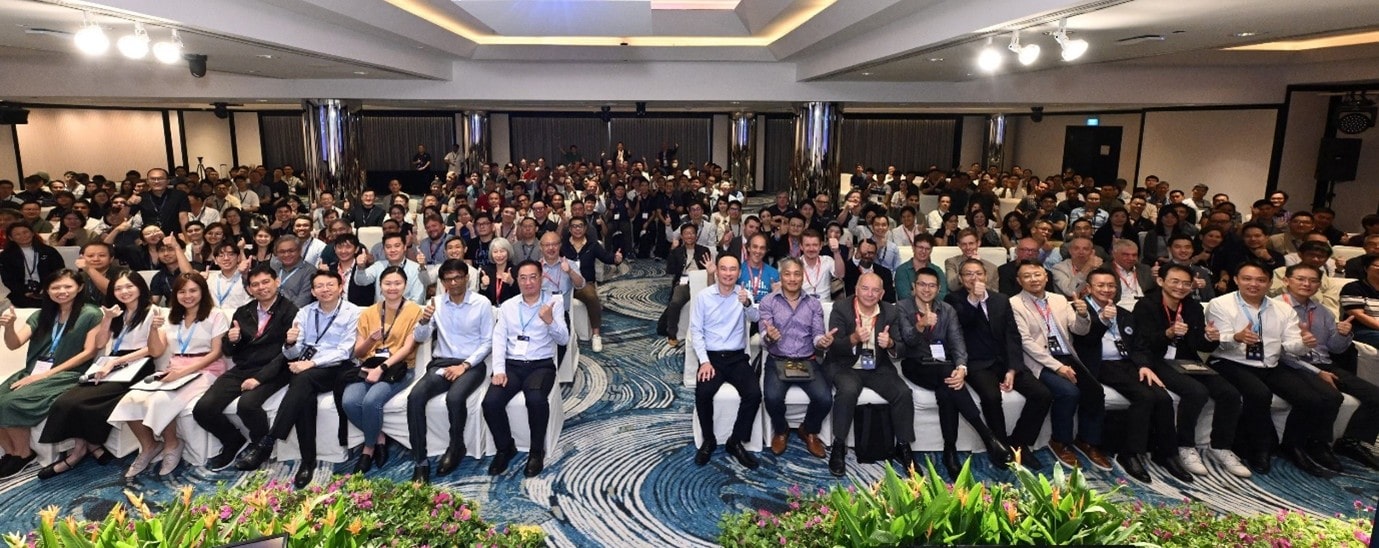 Group photo of Home Front Simulation Symposium 2025. (Photo: HTX)
Group photo of Home Front Simulation Symposium 2025. (Photo: HTX)
AI-powered simulation technology allows for the engineering of high fidelity and data rich environments that can empower training for public safety operations in today’s increasingly complex security environment - this was the key message in HTX Deputy Chief Executive (Development) Ng Yeow Boon’s opening address at the Homefront Simulation Symposium, which took place on 26 August 2025.
Jointly organised by HTX and the Home Team Academy (HTA), the symposium was focused on the latest developments and applications of simulation technologies in public security. The event attracted over 360 participants from the Home Team as well as public security agencies and academic and industry partners from Singapore, the United States, the United Kingdom, Germany, Austria, and the Netherlands.
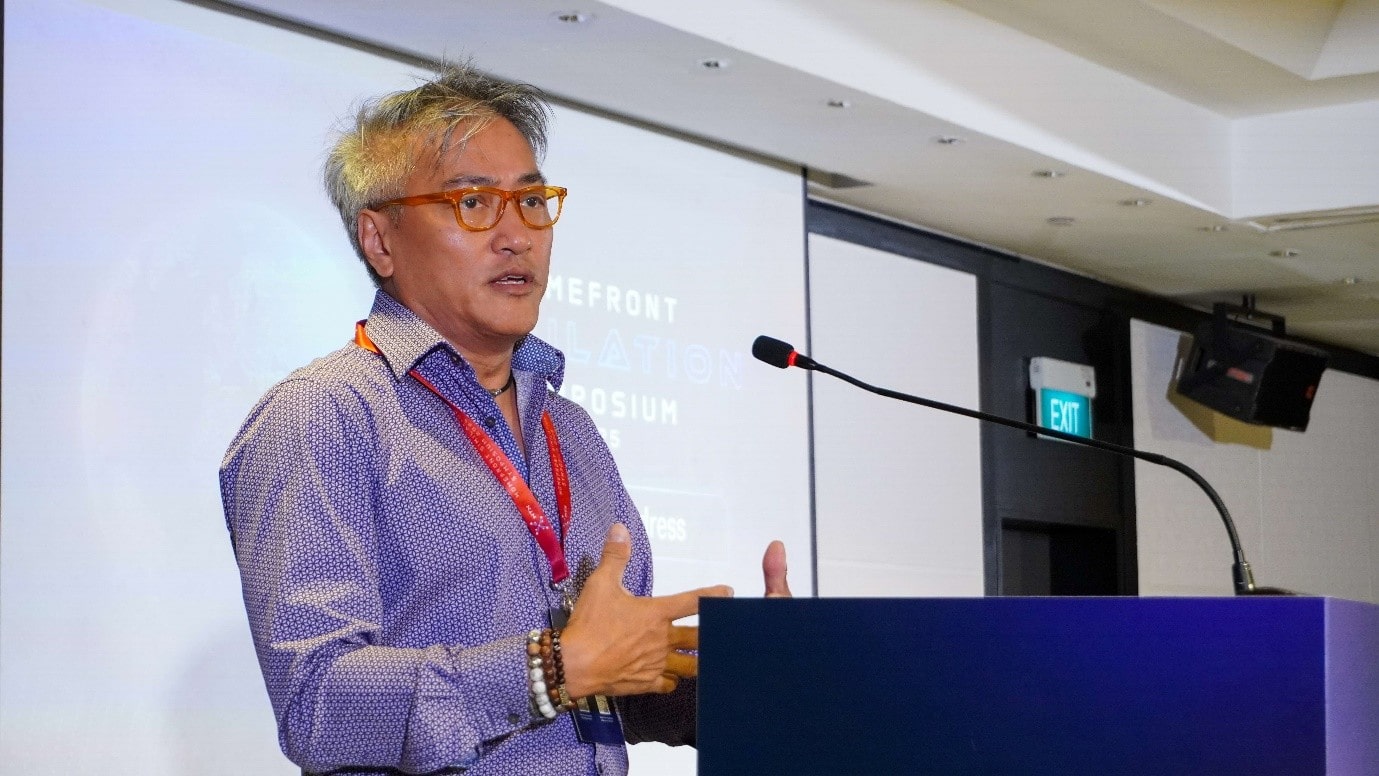 DCE(D) Ng Yeow Boon delivering his opening address. (Photo: HTX/Nicole Lim)
DCE(D) Ng Yeow Boon delivering his opening address. (Photo: HTX/Nicole Lim)
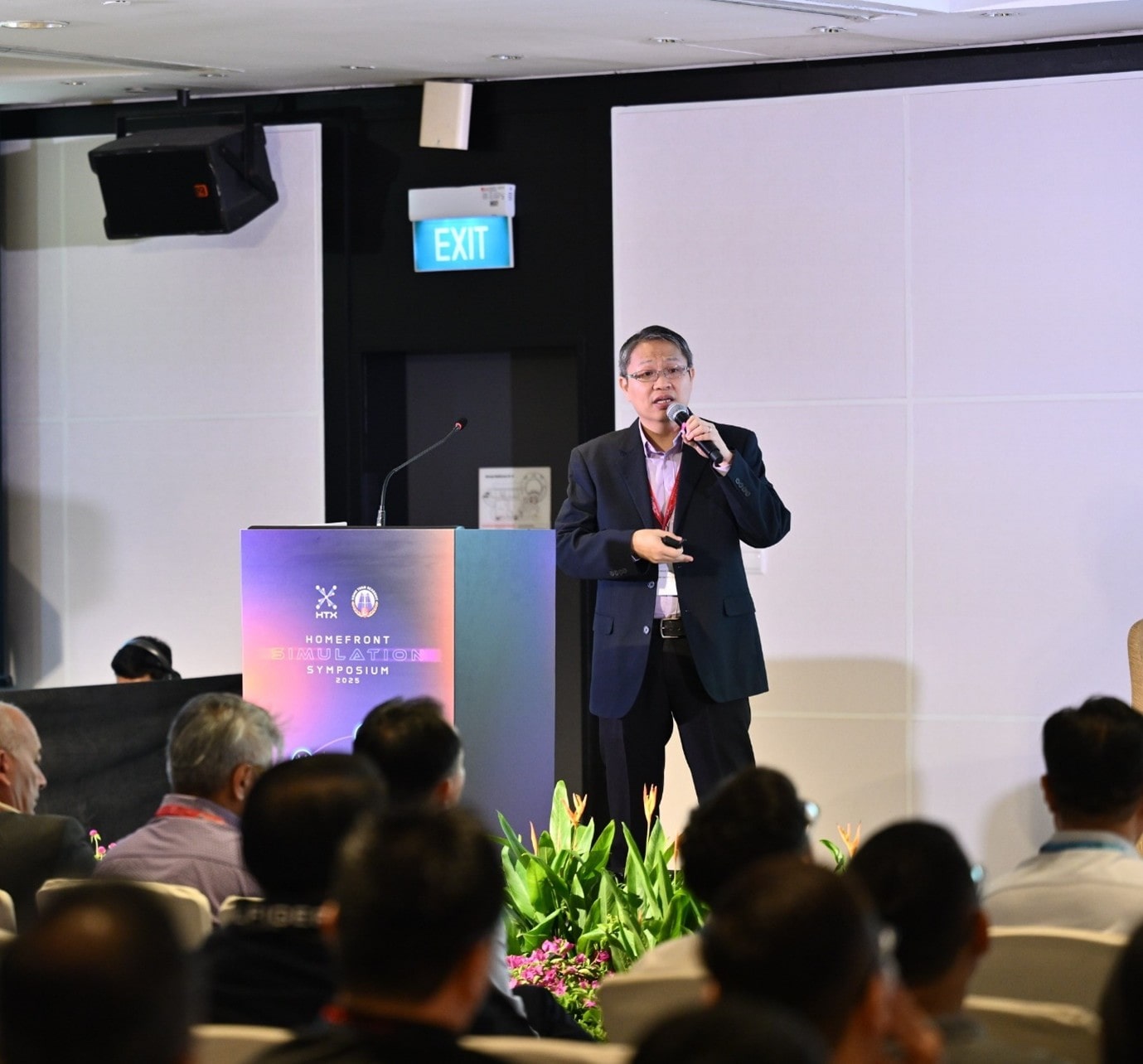 Tan Hock Woo, CTO, Training and Simulation, ST Engineering. (Photo: HTX)
Tan Hock Woo, CTO, Training and Simulation, ST Engineering. (Photo: HTX)
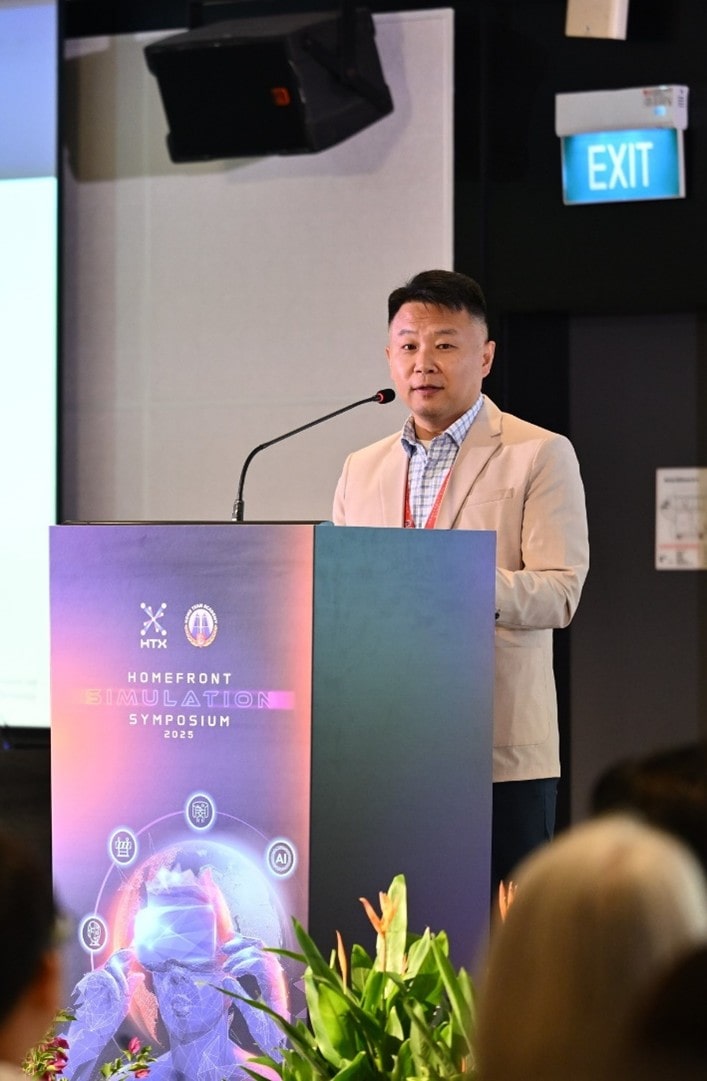 John Han, Science and Technology Attaché, US DHS. (Photo: HTX)
John Han, Science and Technology Attaché, US DHS. (Photo: HTX)
 HFS CoE Director Ying Meng Fai. (Photo: HTX)
HFS CoE Director Ying Meng Fai. (Photo: HTX)
 From left to right: moderator Dr Saravana Kumar, Deputy Director, HFS CoE; Tan Hock Woo, CTO, Training and Simulation, ST Engineering; John Han, Science and Technology Attaché, US DHS; and Ying Meng Fai, Director, HFS CoE (Photo: HTX/Nicole Lim)
From left to right: moderator Dr Saravana Kumar, Deputy Director, HFS CoE; Tan Hock Woo, CTO, Training and Simulation, ST Engineering; John Han, Science and Technology Attaché, US DHS; and Ying Meng Fai, Director, HFS CoE (Photo: HTX/Nicole Lim)
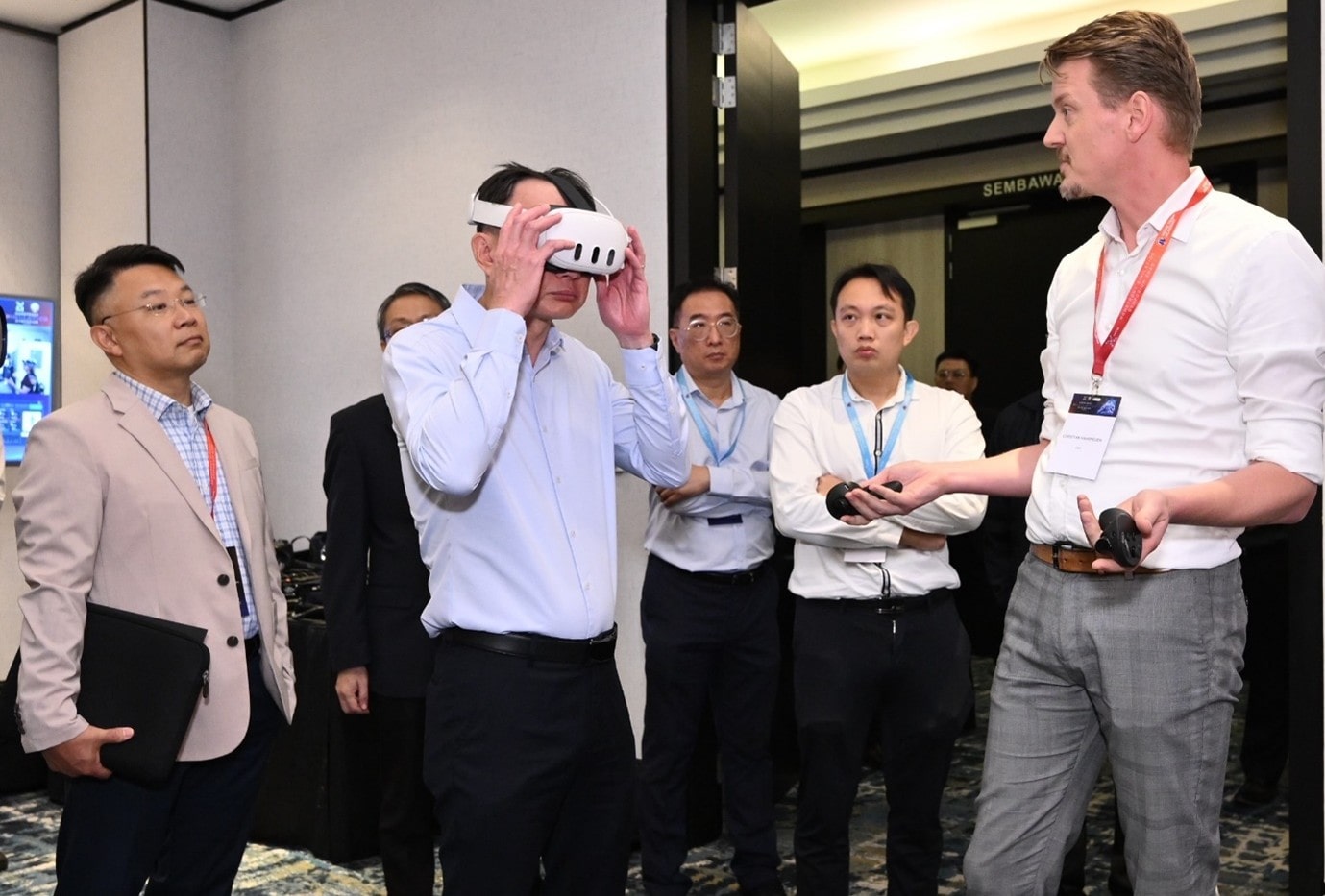 HTA Chief Executive Wilson Lim experiencing immersive simulation training through a VR headset, exploring a 3D map of Orchard Road. (Photo: HTX)
HTA Chief Executive Wilson Lim experiencing immersive simulation training through a VR headset, exploring a 3D map of Orchard Road. (Photo: HTX)
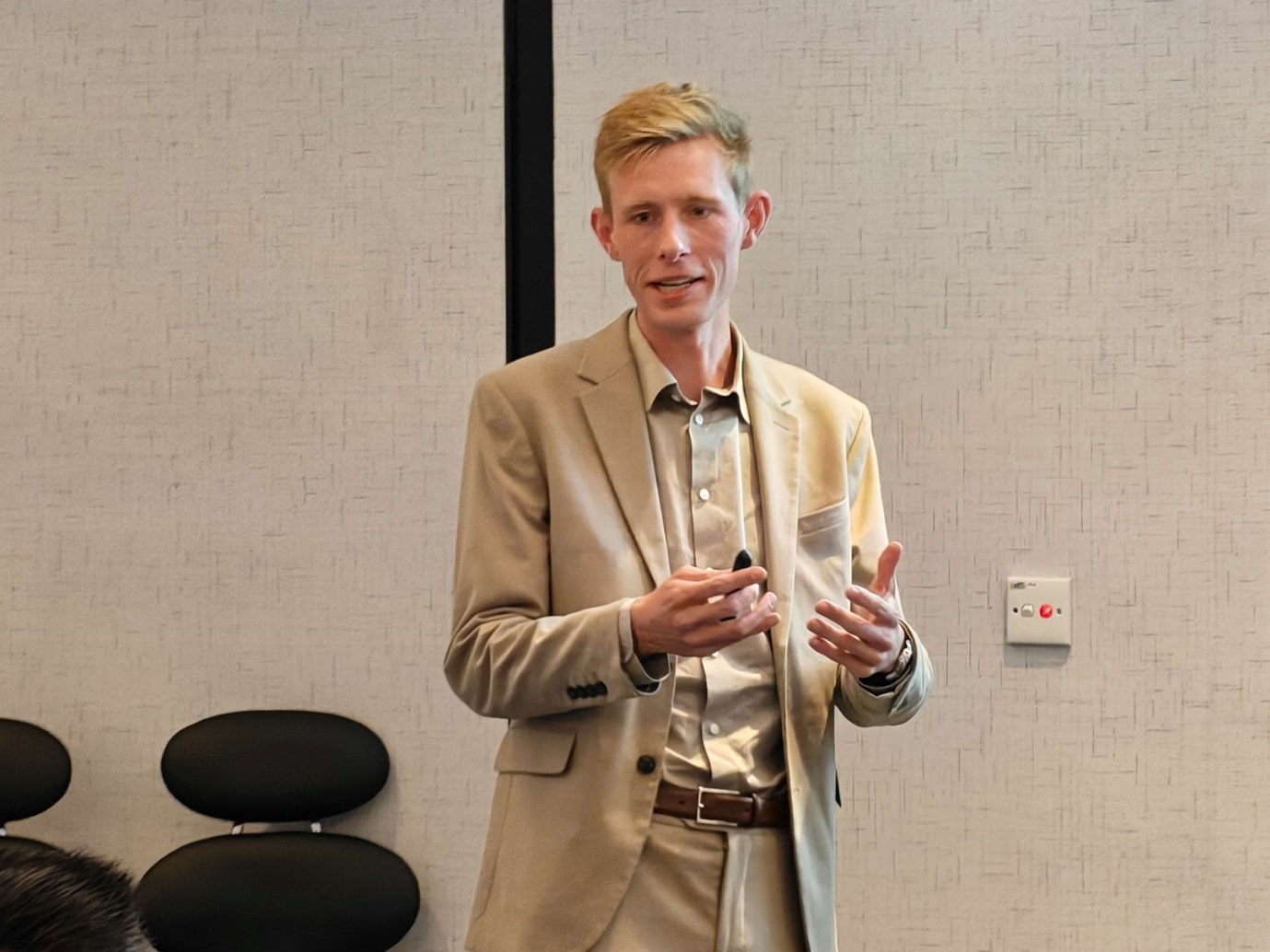 Matthijs Koedijk, Senior Scientist, Human Performance, The Netherlands Organisation for Applied Scientific Research (TNO), speaking on “Human Capability and Technology: Simulation of Human Performance in Military and Police Contexts”. (Photo: HTX/Alvin Lim)
Matthijs Koedijk, Senior Scientist, Human Performance, The Netherlands Organisation for Applied Scientific Research (TNO), speaking on “Human Capability and Technology: Simulation of Human Performance in Military and Police Contexts”. (Photo: HTX/Alvin Lim)
 Panel discussion on “Shaping the Future of Immersive Training and Operations”. From left to right: moderator Derek Chong, Lead Engineer (Human Performance Modelling in XR, Human Simulation, Instrumentation and Modelling), HFS CoE; Markus Murtinger, AIT; Professor Yen Ching-Chiuan, Keio-NUS CUTE Centre; Christian Haarmeijer, CEO/Co-founder RE-Lion; and Saravana Kumar, Deputy Director, HFS CoE (Photo: HTX/Alvin Lim)
Panel discussion on “Shaping the Future of Immersive Training and Operations”. From left to right: moderator Derek Chong, Lead Engineer (Human Performance Modelling in XR, Human Simulation, Instrumentation and Modelling), HFS CoE; Markus Murtinger, AIT; Professor Yen Ching-Chiuan, Keio-NUS CUTE Centre; Christian Haarmeijer, CEO/Co-founder RE-Lion; and Saravana Kumar, Deputy Director, HFS CoE (Photo: HTX/Alvin Lim)
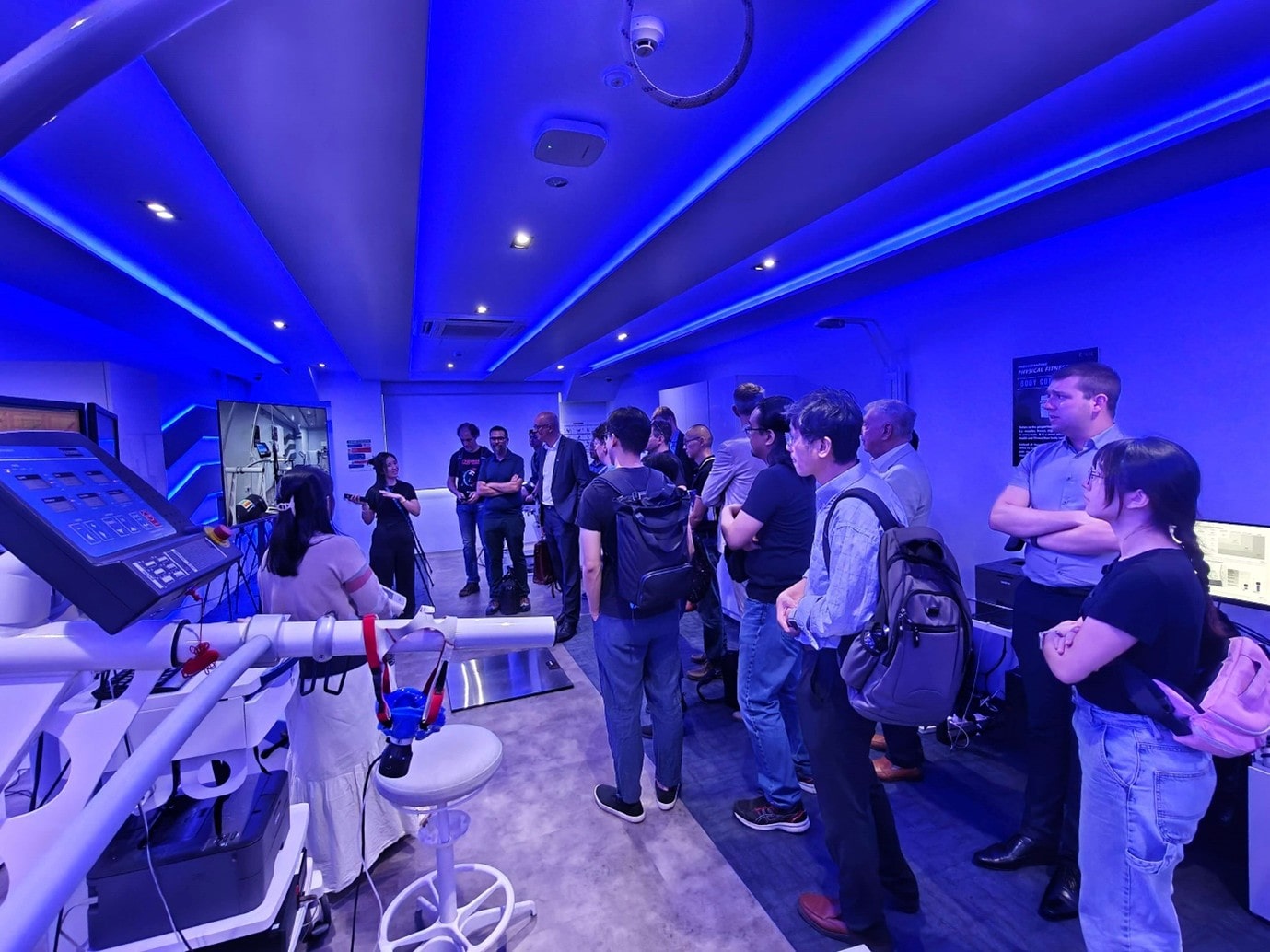 The delegates at EXCEL’s fitness evaluation lab. (Photo: HTX/Alvin Lim)
The delegates at EXCEL’s fitness evaluation lab. (Photo: HTX/Alvin Lim)
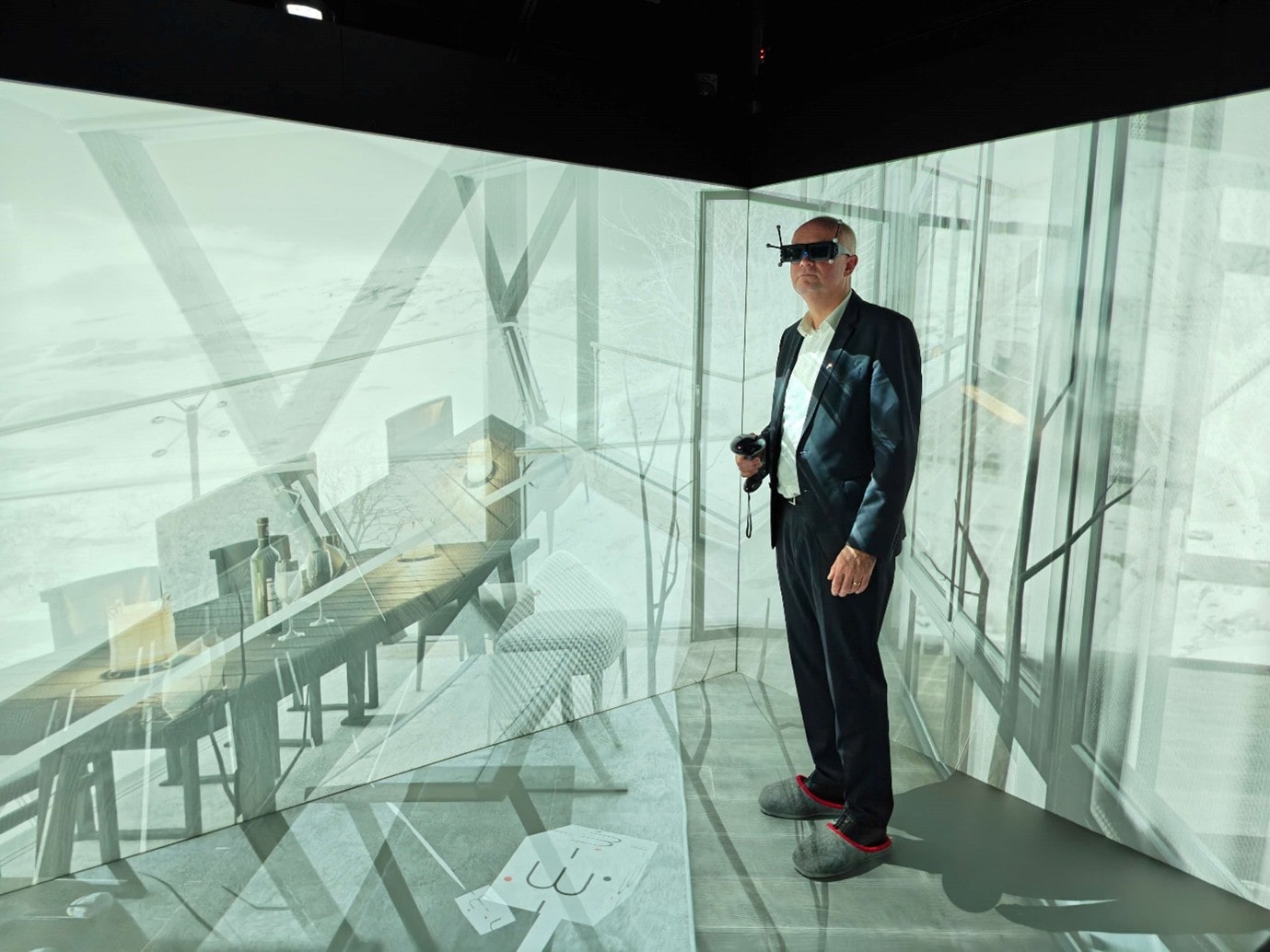 A delegate experiencing a stereoscopic virtual environment. (Photo: HTX/Alvin Lim)
A delegate experiencing a stereoscopic virtual environment. (Photo: HTX/Alvin Lim)
 Professor Uwe Wössner, HLRS (High Performance Computing Centre Stuttgart), sharing with the workshop participants on vehicle dynamics simulation, pedestrian and traffic simulation, road network modelling, and realistic environment rendering. (Photo: HTX/Alvin Lim)
Professor Uwe Wössner, HLRS (High Performance Computing Centre Stuttgart), sharing with the workshop participants on vehicle dynamics simulation, pedestrian and traffic simulation, road network modelling, and realistic environment rendering. (Photo: HTX/Alvin Lim)

